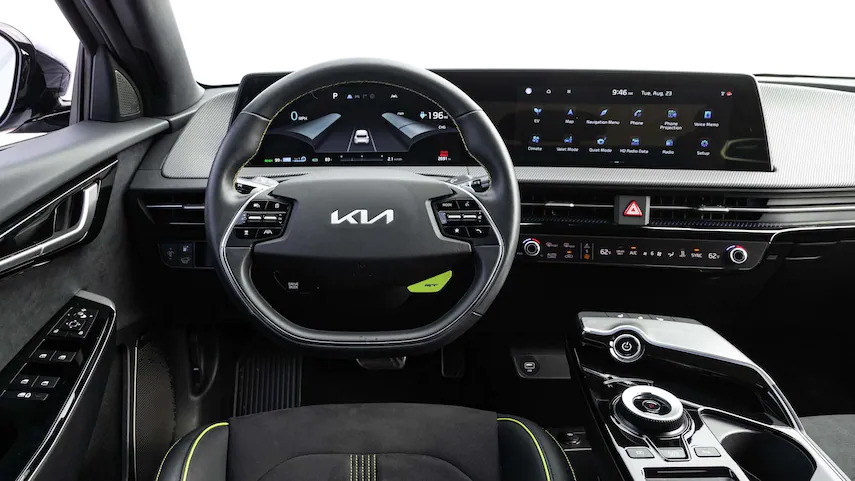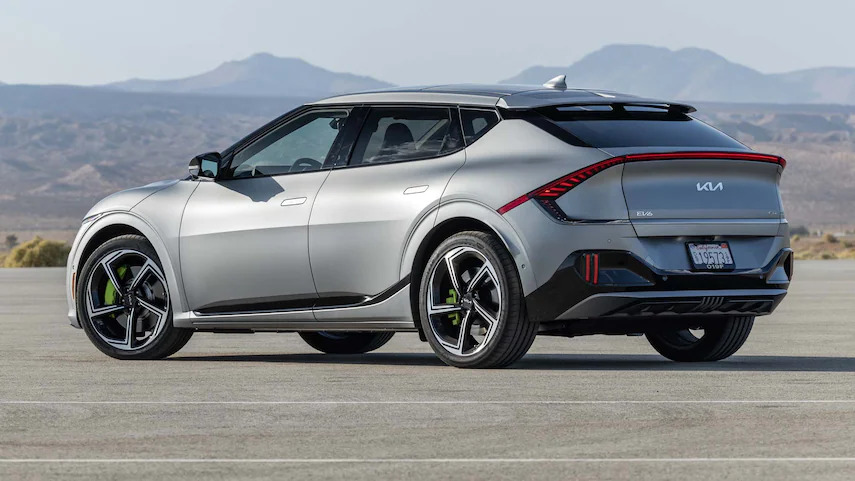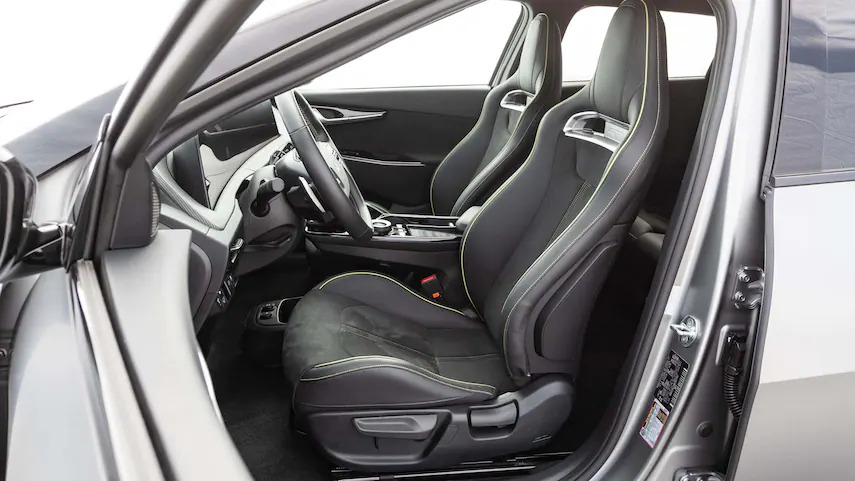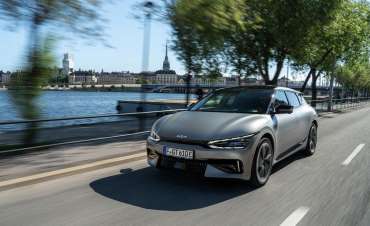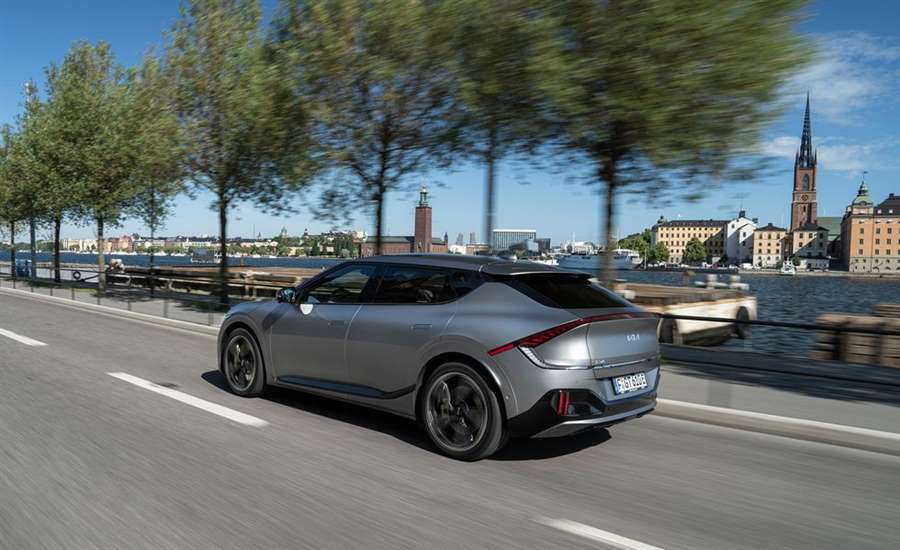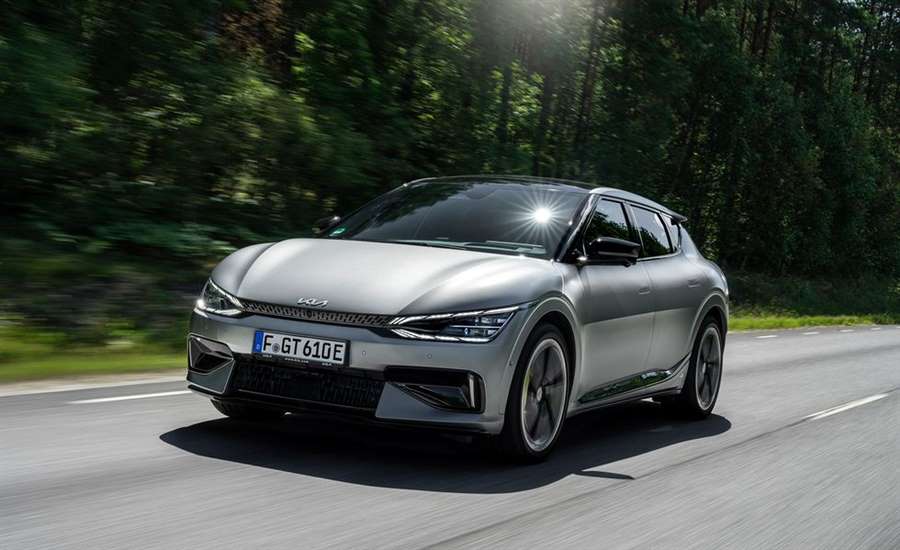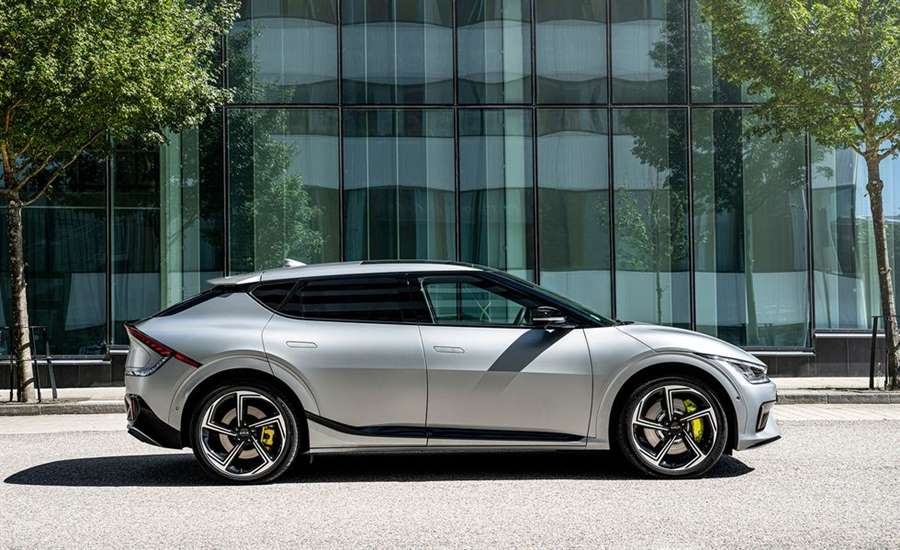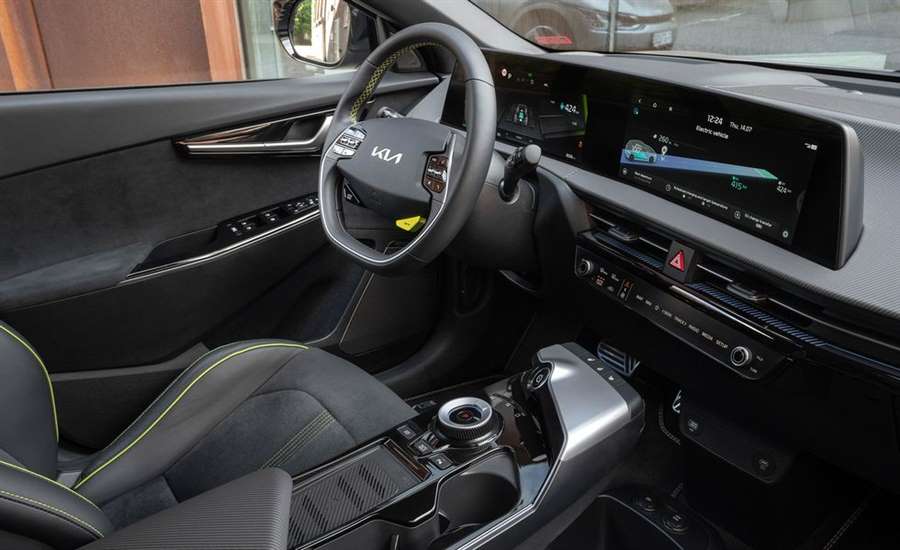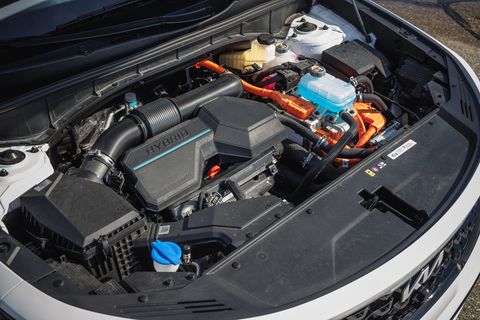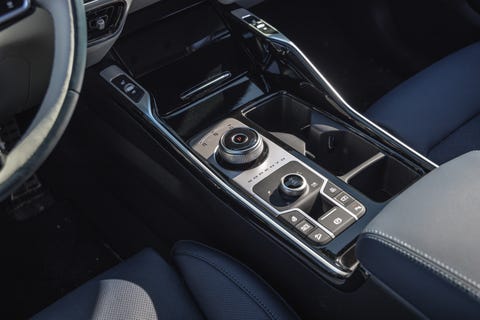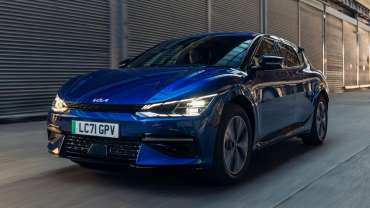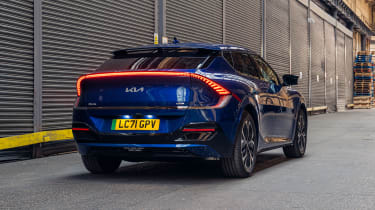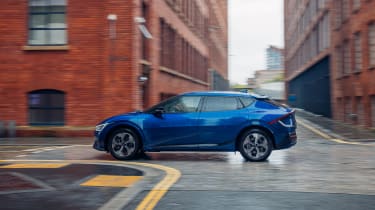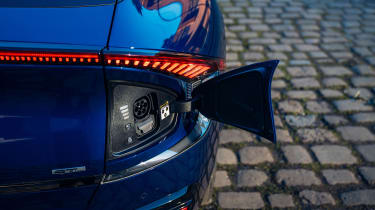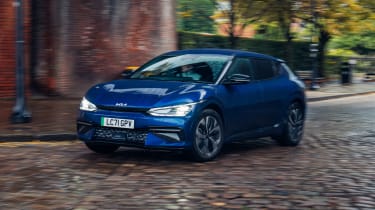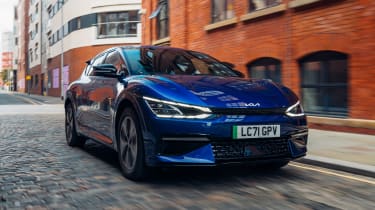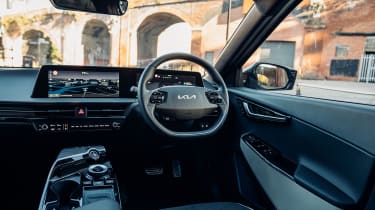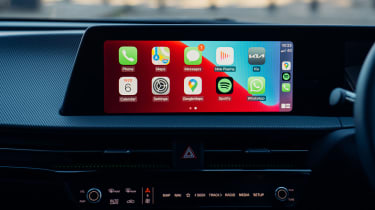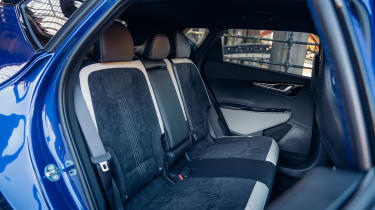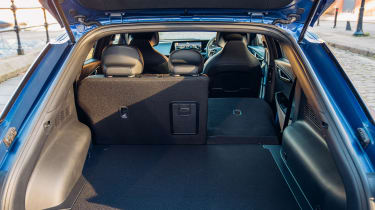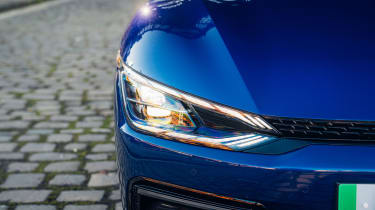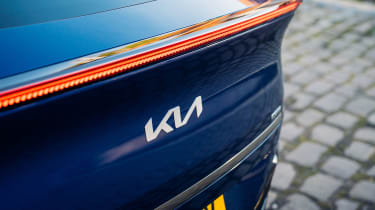Senior Editor Mike Hanley is a father of three boys; he reviews new cars, admires classic cars and has embraced the minivan lifestyle. Email Mike Hanley
The verdict: The new GT performance version of the 2023 Kia EV6 dials up the power, handling and fun of this all-electric SUV — without breaking the bank.
Versus the competition: The EV6 GT delivers better top-end acceleration performance than the Ford Mustang Mach-E GT Performance Edition and is more engaging to drive than the Tesla Model Y Long Range. It also costs considerably less than both of them.
We’ve been fairly impressed with the Kia EV6 all-electric SUV, especially when it beat the Tesla Model Y when we matched a GT-Line trim level against our long-term Model Y Long Range in a head-to-head comparison consisting of street, track and charging testing.
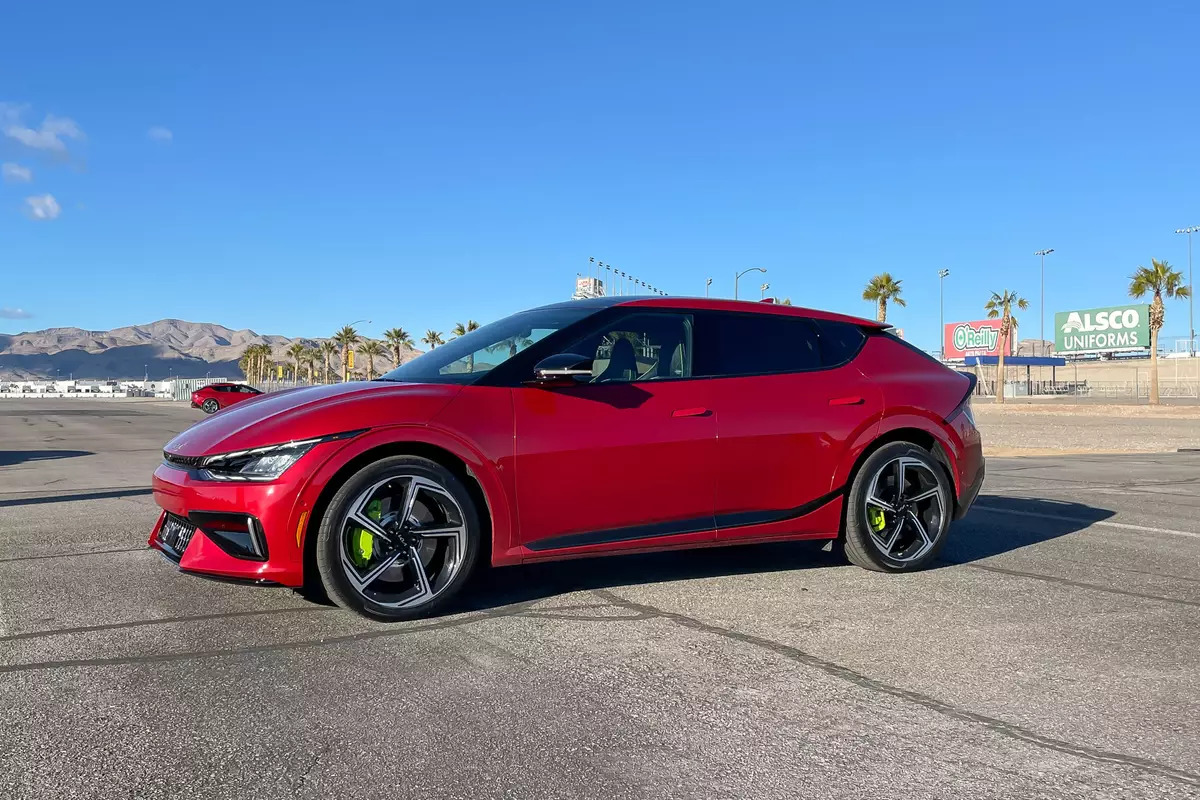
The EV6 was already a bit of a performance electric vehicle, but for 2023, Kia has a new high-performance GT trim that considerably sharpens and heightens the SUV’s demeanor. It features more powerful front and rear motors, bigger brakes, revised steering tuning, an adaptive suspension and an electronically controlled limited-slip rear differential. Exterior and interior changes are more modest but include 21-inch alloy wheels wrapped in Goodyear Eagle F1 summer tires and, inside, front sport seats with neon-green accents.
So how do all these changes affect the EV6 driving experience? To find out, I traveled to Las Vegas at Kia’s invitation to drive the EV6 GT both on the street and at the track (Cars.com pays for its own airfare and lodging when attending manufacturer-sponsored events). The changes make the EV6 a compelling performance machine, but they have tradeoffs, too, and the GT still has some of the same shortcomings as the regular EV6.
On the Street
The EV6’s GT-specific features come through in different ways in everyday driving and, combined, give it a clear performance focus. The adaptive suspension tuning is firm even in the Normal drive mode, and it gets even less forgiving when you choose GT mode. The ride isn’t as harsh (or as loud in the cabin) as in a Model Y, but you always feel the suspension reading the road and communicating back to you the pavement’s general condition. Even if you’re on a road that looks perfectly smooth, the EV6 GT will let you know that it’s not as it reacts to unseen bumps and dips.
The suspension tuning’s benefit is evident in the car’s controlled body motions, as the EV6 GT stays impressively level when charging through fast corners, and it isn’t unsettled when the road drops from under you when cresting a hill. The car’s curb weight is considerable at nearly 4,800 pounds, but around 1,000 pounds is from the high-voltage battery pack. The battery is in the floor, which helps lower the EV6’s center of gravity, and this, along with the suspension tuning, benefits handling.
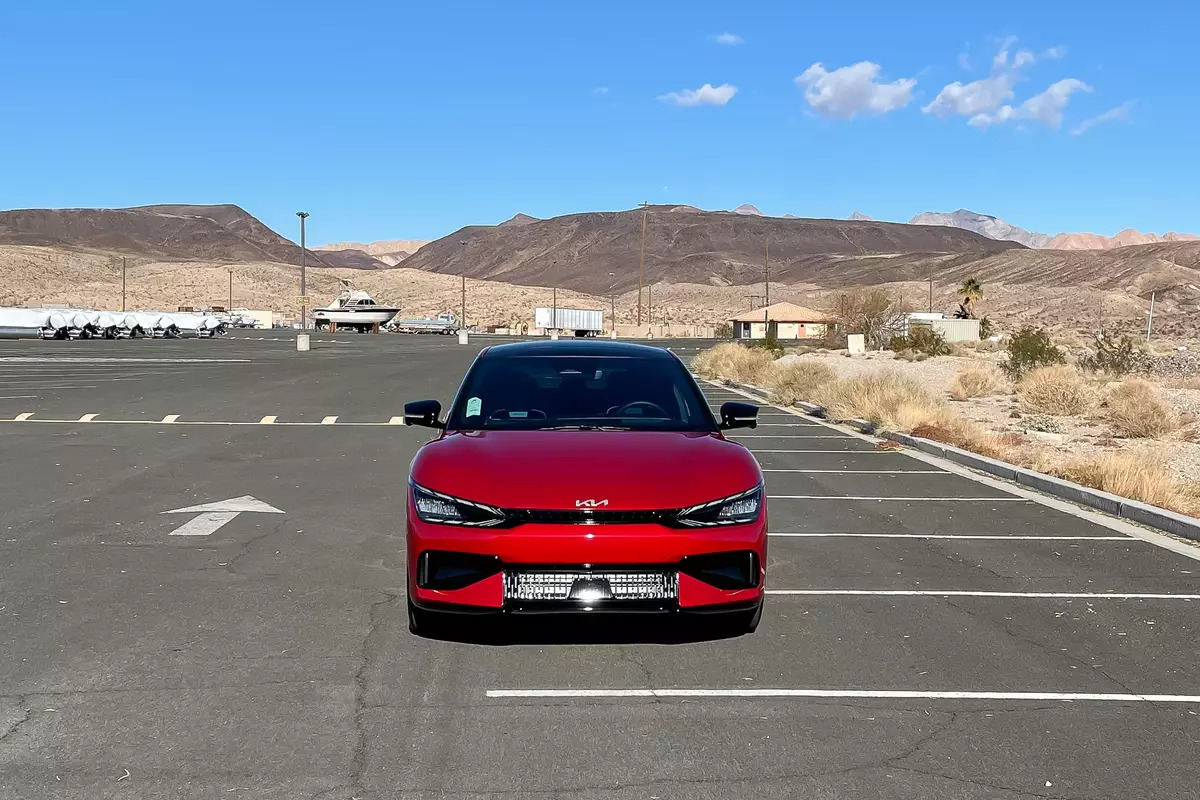
The new steering tuning also contributes to the GT’s performance feel. The steering ratio is quicker, the wheel itself has quite a bit of heft to it, and the Sport and GT drive modes further increase steering effort. There’s also a bit of feedback through the rim of the wheel to let you feel what’s happening at the tires.
The only tires the GT offers are summer performance rubber. The Eagle F1s do tend to pick up and launch small road debris like sand and pebbles at the wheel liners, creating a bit of a background soundtrack when driving, but the tires themselves aren’t noisy, and the cabin is impressively quiet overall, with wind noise only noticeably intruding above 70 mph.
The GT’s new front and rear electric motors are powerful, delivering total output of 576 horsepower and 545 pounds-feet of torque. That’s a big jump from an all-wheel-drive GT-Line, which makes 320 hp and 446 pounds-feet of torque but is also around 300 pounds lighter. Kia claims the GT is good for 0-60 mph in just 3.4 seconds and has a top speed of 161 mph.
Moving up the drive modes from Eco to Normal to Sport to GT heightens accelerator-pedal response, to the point where it’s very immediate in the GT mode. GT mode also unlocks the car’s full 576 hp; it’s limited to 429 hp in Normal and Sport, and 286 hp in Eco. GT mode offers the most aggressive acceleration response, but Normal and Sport modes also provide effortless acceleration that’s more than enough for everyday driving. Drive more conservatively, and the EV6 GT turns into a docile EV that can get decent efficiency; I observed 3.5 miles per kilowatt-hour during one 36-mile stretch of highway and rural two-lane-road driving, which is similar to the 3.3 miles per kWh that an EV6 GT-Line got during a highway range test as part of our Model Y comparison.
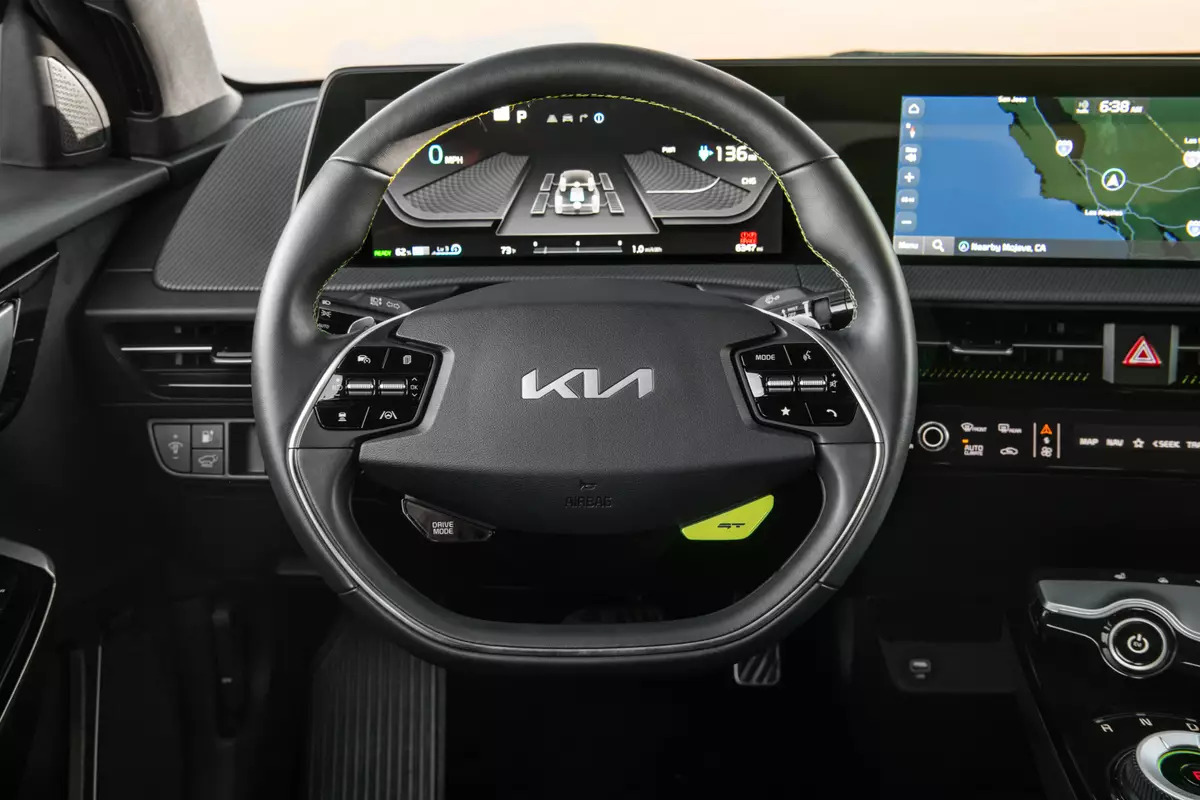
The EV6 includes adjustable regenerative braking and a one-pedal driving mode that are controlled by paddles on the steering wheel. When one-pedal driving is active, vehicle speed is controlled by the position of the accelerator pedal alone; let off on the pedal, and the car slows immediately. This turned out to be an unexpected performance feature, as it helped manage speed when entering a corner.
At the Track
I also drove the EV6 GT on a road course and drag strip adjacent to Las Vegas Motor Speedway, and both places further showcased the car’s handling and acceleration performance.
Perhaps the most surprising thing about the EV6 GT’s road course manners was just how willing, in GT mode, the rear end is to step out if you’re not careful getting back on the accelerator pedal when exiting a corner — there’s a looseness that you don’t always see in modern performance cars, let alone electric SUVs. The rear motor is powerful — it contributes 362 hp to the car’s total output — and GT mode dials back the stability system’s willingness to intervene (it can be turned off completely, too). The resulting tail happiness added a bit of unexpected fun when pushing the SUV on the track. If you really want to let it all hang out, there’s a Drift setting that uses the rear motor to create oversteer when cornering.
The EV6 GT will get around a tight road course reasonably well thanks to its well-controlled body motions and stout power, but you can feel the car’s considerable heft — particularly when mashing the brake pedal before entering a turn. The car’s beefier brakes — the front ventilated discs measure 15 inches, while the rears are 14.2 inches, and there are quad-piston front calipers — do a good job shedding speed, but you can tell they’re working hard.
The drag strip revealed just how strong the EV6 GT’s dual-motor drivetrain is, as the SUV consistently ran quarter-mile times in the 11.4-second range at around 118 mph. We’ve tested the Model Y Long Range with its Acceleration Boost unlocked versus a Genesis GV60 Performance, as well as a Ford Mustang Mach-E GT Performance Edition, at our home drag strip in Union Grove, Wis., and the EV6 GT was faster than all of them. I was particularly impressed with the EV6 GT’s ability to sustain its acceleration during the latter half of the quarter-mile; the Mustang Mach-E GT Performance Edition, by comparison, loses a considerable amount of steam, resulting in unimpressive quarter-mile performance.
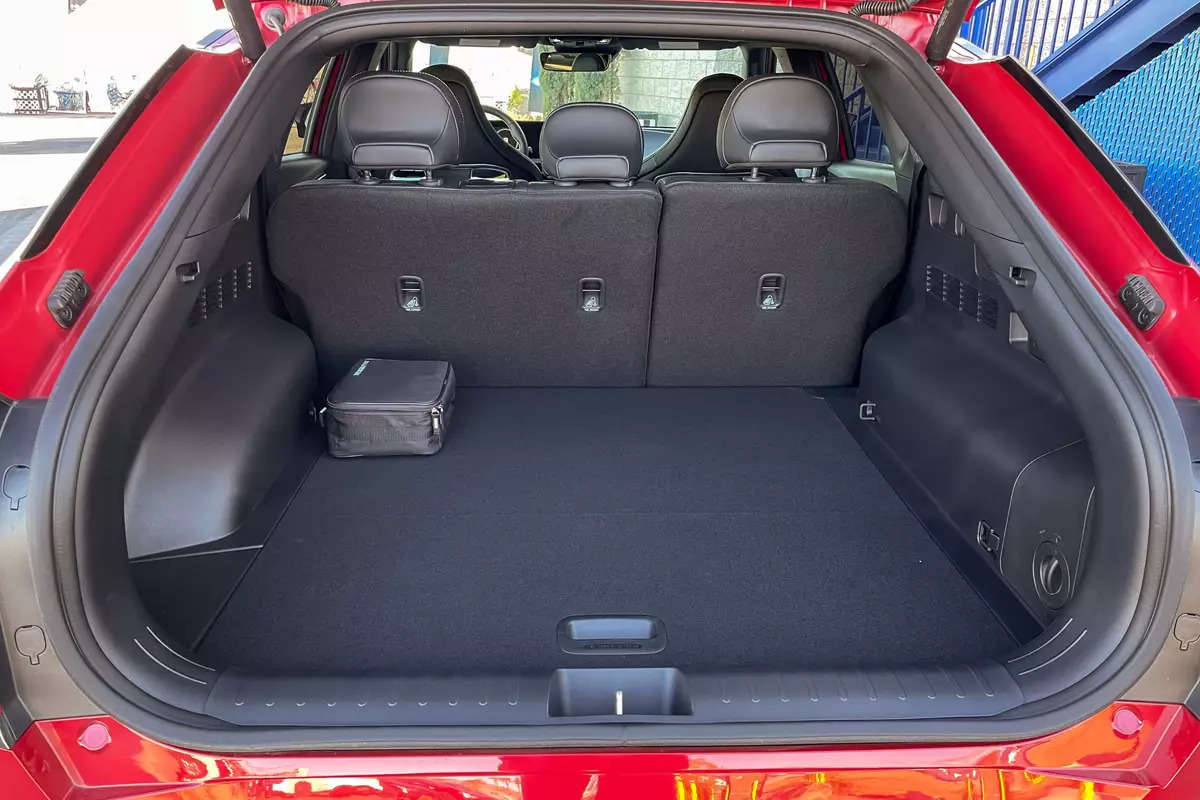
A Familiar Cabin — For Better or Worse
Apart from the new front sport seats and some distinctive green accents, the GT’s cabin is very similar to the GT-Line version of the EV6 with mostly black trim and suede-style accents. It looks stylish and sporty, and the various controls are easy enough to use.
The front sport seats are a good addition overall, as their bolstered sides do a good job holding you in place during fast corners, but they’re not perfect. For one, the seats have manual as opposed to power adjustments like the GT-Line, and though they’re heated, they lack adjustable lumbar support and ventilation, which are also GT-Line features. The seats’ overall lack of amenities seems out of place in an SUV with a starting price north of $62,000. What’s more, the seats’ hard cushioning wasn’t particularly comfortable; most seats in the cars I test agree with me, but the EV6 GT’s are a notable exception.
There are other comfort shortcomings, too, that are also present in other EV6 models and are particularly relevant if you’re taller than 6 feet, as I am. Front-seat headroom is especially limited in moonroof-equipped trim levels like the GT where it’s standard and, in the backseat, you sit with your thighs elevated at an uncomfortable angle because the seat cushion and floor are close. The rear backrest reclines, which improves overall comfort somewhat, but the combination of a black headliner and short side windows make the backseat feel a bit closed-in.
Efficiency, Range and Charging
Like other performance EVs, the EV6 GT is less efficient and has a shorter estimated driving range than its less powerful siblings, but the difference is more dramatic than its competitors. The GT gets an EPA-estimated 79 mpg-equivalent combined and has an estimated range of 206 miles, but the most efficient AWD EV6 is rated 109 mpg-e combined with a range of 282 miles. The efficiency and range spread between regular and performance versions is closer for the Model Y, Mustang Mach-E and GV60.
The Model Y Performance’s 303-mile driving range is considerably longer than the EV6 GT’s, but the Kia’s 800-volt architecture supports faster DC charging, which is an advantage we observed during our comparison test of the Model Y and EV6. The EV6 GT also comes with 1,000 kWh of complimentary energy at Electrify America chargers to use within the first three years of ownership.
The GT’s 206-mile range is modest by modern EV standards, but it should still be more than enough for most daily driving needs, making home charging the more relevant consideration. All EV6s have a 10.9-kilowatt onboard charger that Kia says can recharge the battery in around 7 hours using a Level 2 charger operating at 48 amps. Like other EV6s, the GT has a 77.4-kWh battery pack, and in earlier testing, using a Wallbox Level 2 home charger operating at 48 amps, an EV6 added 11.2 kWh of energy in an hour, so Kia’s roughly 7-hour charging time estimate seems reasonable.
A Surprising Performance Value
There’s been some hefty price hikes recently on EV offerings from Tesla and Ford, to name two automakers, and the result has made models like the Model Y and Mustang Mach-E quite expensive, with the Model Y Performance starting at $71,440 and the Mustang Mach-E GT Performance Edition priced from $77,195 (all prices include destination).
Against this backdrop, the EV6 GT is a performance bargain with a starting price of $62,695. There aren’t any option packages to boost the overall price; the only extra-cost items are some available accessories and certain paint colors.
Finding highly anticipated performance cars selling at their sticker price without any dealer markups has long been difficult, and it’s a situation that’s been exacerbated with new-car inventory remaining tight coming out of the pandemic. Kia only plans to build 2,000 to 2,500 GTs a year for the U.S., so finding one for sale at its MSRP could very well be challenging. The thrills the EV6 GT offers, however, will make it worth your while.
Source: cars.com








